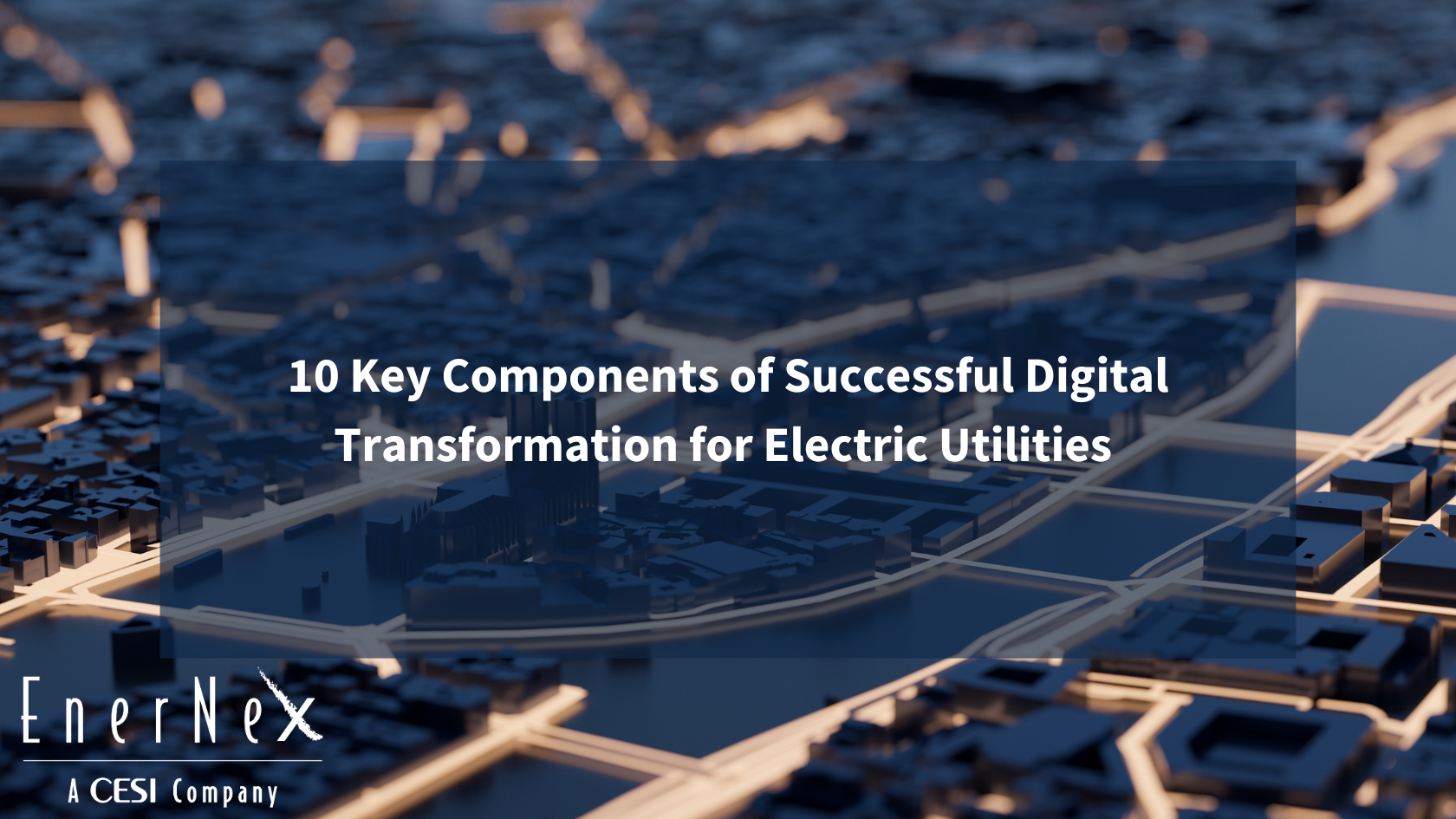_______________________________________________________________________________________________________________________
Introduction
The electric utility industry is at a pivotal moment, where the integration of digital technologies is no longer just an option but a necessity. As the demand for reliable, efficient, and sustainable energy grows, electric utilities must embrace digital transformation to remain competitive and relevant. This transformation is not simply about adopting new technologies; it’s about fundamentally changing how utilities operate, engage with customers, and manage resources. Here, we explore the ten key components that underpin a successful digital transformation for electric utilities.
1. Strategic Vision and Leadership Commitment
The foundation of any successful digital transformation is a clear strategic vision. Electric utilities must define what digital transformation means for their organization, setting specific goals that align with their overall business objectives. Leadership commitment is crucial to drive this vision forward. Without strong leadership, digital initiatives may struggle to gain traction, as they often require significant cultural and operational changes. Leaders must not only support these changes but also actively champion them, ensuring alignment across all levels of the organization.
2. Customer-Centric Approach
In a digital age, customer expectations are higher than ever. Electric utilities must adopt a customer-centric approach, using digital tools to enhance the customer experience. This includes offering personalized services, improving transparency, and ensuring reliability. Digital platforms can help utilities better understand customer needs and preferences, enabling them to provide tailored solutions and proactive communication. By placing the customer at the center of their digital strategy, utilities can build stronger relationships and increase customer satisfaction.
3. Comprehensive Integration of Advanced Technologies
Digital transformation in electric utilities is driven by the integration of advanced technologies such as:
• Smart Grids
• The Internet of Things (IoT),
• Artificial Intelligence (AI),
• Machine Learning.
These technologies enable utilities to optimize operations, improve decision-making, and enhance grid management. For example, smart grids allow for real-time monitoring and management of electricity flow, leading to greater efficiency and reliability. AI and machine learning can be used for predictive maintenance, demand forecasting, and anomaly detection, reducing costs and improving service delivery.
4. Cybersecurity and Data Protection
As electric utilities become more digitized, they also become more vulnerable to cyber threats. Ensuring robust cybersecurity measures is essential to protect critical infrastructure and maintain the trust of customers and stakeholders. Utilities must implement comprehensive cybersecurity strategies that include regular assessments, threat detection, and incident response plans. Additionally, data protection is paramount. Utilities must establish strong data governance practices and ensure compliance with relevant regulations to safeguard customer and operational data.
5. Workforce Transformation and Skill Development
Digital transformation requires a workforce that is skilled and adaptable. Electric utilities must invest in upskilling and reskilling their employees to ensure they can effectively use new digital tools and technologies. This involves not only technical training but also fostering a culture of continuous learning and innovation. Change management is critical in this process, as employees may resist new ways of working. Utilities should engage employees early in the transformation process, providing clear communication and support to facilitate a smooth transition.
6. Agile and Adaptive Operating Models
The pace of change in the digital landscape requires electric utilities to adopt agile and adaptive operating models. Traditional, rigid structures may hinder the ability to respond quickly to new opportunities and challenges. Agile methodologies, characterized by iterative development and continuous improvement, allow utilities to be more responsive and flexible. This approach also supports the rapid deployment of new technologies and solutions, ensuring that utilities can stay ahead in a competitive market.
7. Enhanced Analytics: Data-Driven Decision-Making
Data is at the heart of digital transformation. Electric utilities must harness the power of big data and real-time analytics to inform decision-making at all levels of the organization. By creating a data-centric culture, utilities can gain deeper insights into their operations, customer behavior, and market trends. For instance, data analytics can optimize grid performance, improve asset management, and enhance demand forecasting. The ability to make informed, data-driven decisions is a key differentiator in the digital age.
8. Regulatory and Compliance Alignment
The regulatory landscape for electric utilities is complex and constantly evolving. Successful digital transformation requires careful navigation of these regulations to ensure compliance while driving innovation. Utilities must work closely with regulators to shape policies that support digital initiatives, such as the adoption of smart grids or renewable energy integration. Compliance should not be seen as a barrier but rather as an enabler of transformation, providing a framework within which utilities can operate securely and effectively.
9. IT/OT Infrastructure Modernization
Enterprise Service Bus (ESB) and cloud technologies are critical to digital transformation efforts for electric utilities because they enhance operational efficiency, scalability, and integration. Cloud technology provides a flexible and cost-effective platform for storing and processing large volumes of data, enabling utilities to leverage advanced analytics and real-time monitoring to optimize energy distribution and management. An ESB facilitates seamless communication and integration between disparate systems and applications, allowing for:
• Streamlined Workflows
• Improved Data Accuracy
• Faster Response Times to Changing Conditionspo
Together, these technologies serve as the lynchpin integrating IT, OT, and data analytics systems thereby driving innovation and enabling power utilities to meet evolving customer demands and regulatory requirements.
10. “Kaizen” thru Continuous Monitoring and Evaluation
Digital transformation is an ongoing process, not a one-time project. Electric utilities must establish key performance indicators (KPIs) and metrics to continuously monitor and evaluate the success of their digital initiatives. Regular assessments provide valuable feedback, allowing utilities to adjust their strategies and optimize outcomes. This continuous improvement approach ensures that digital transformation efforts remain aligned with the organization’s goals and can adapt to new challenges and opportunities as they arise.
Conclusion
The digital transformation of electric utilities is a complex but essential endeavor. By focusing on these ten key components—strategic vision, customer-centricity, advanced technologies, cybersecurity, workforce transformation, agile models, data-driven decision-making, regulatory alignment, infrastructure, and continuous evaluation—utilities can successfully navigate this transformation. As the energy landscape continues to evolve, those that embrace digital innovation will be better positioned to deliver reliable, efficient, and sustainable energy to their customers, securing their place in the future of the industry.
At EnerNex, our expertise in driving digital transformation for electric utilities ensures successful integration and modernization. Let’s shape the future of energy together. Contact us at info@enernex.com and solve energy challenges with experts by your side!
________________________________________________________________________________________________________________________
Contact the Author



